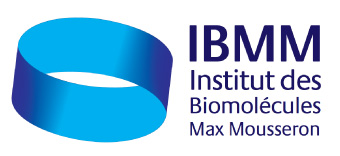Energy-resolved tandem mass spectrometry enables the analysis of iso-baric/meric mixtures and mechanistic investigations of organometal-catalyzed reactions
Séminaire Chimie ED459
Dr. Antony
Le Jeudi 10 Octobre 2019 à 14h
ENSCM, Amphithéâtre Godechot (campus Balard, 240 av. Émile-Jeanbrau)
Date de début : 2019-10-10 14:00:00
Date de fin : 2019-10-10 15:30:00
Lieu : ENSCM amphi Godechot (campus Balard, 240 av E. Jeanbrau)
Intervenant : Dr. Antony
CEMCA Chimie Électrochimie Moléculaires et Chimie Analytique, UMR 6521, CNRS, Université de Bretagne Occidentale, Brest
Mass Spectrometry (MS) is known to be a convenient and powerful analytical technique. It is indeed a sensitive, selective, robust and very versatile technique both for structural and quantitative purposes. In this seminar, it will be presented how tandem MS experiments (MS/MS) may also be used to analyze mixtures of compounds with very close or identical masses but also to investigate the mechanisms of organometal-catalyzed reactions.
The detection, structural analysis and quantification of iso-baric/meric compounds in mixtures may be a difficult task to perform by MS but also in general with other analytical techniques. MS/MS experiments may help in such analysis by using differences either in the fragmentation pattern but also in the fragmentation energetics. If the former approach is extensively used, the latter is less. By following the degree of parent ions surviving the collisional excitation process as a function of excitation voltage in Collision Induced Dissociation MS/MS experiments (namely Energy-Resolved MS/MS experiments), the structural and quantitative analysis of iso-baric/meric mixtures may indeed be performed.[1–4] Few examples of analysis using this approach will be presented, involving the concept of “gas-phase collisional purification”,[5] the standard addition method[3] and using the internal standard technique.[6]
Less popular and widespread is the usage of tandem MS experiments to investigate the mechanisms of organometal-catalyzed reactions as well as the extraction of gas-phase thermochemical data.[7] In this context, by using a home-modified mass spectrometer, reactive collisions were performed in the gas-phase inside the instrument, under well-controlled conditions to evaluate the role of bis(copper) complexes in the copper-catalyzed azide-alkyne cyclo-addition (click-chemistry),[8] or elucidate the origin of CO in the Pauson-Khand transformation.[9] Using adequate kinetic modeling of energy-resolved tandem MS experiments using such a setup, extraction of thermochemical data may also be obtained as in the case of phenylethyne incorporation on Pd(II)-phosphinous acid complexes.[10]
References
1. A. Membœuf, et al, J. Am. Soc. Mass Spectrom. 2011, 22, 1744, DOI: 10.1007/s13361-011-0195-8.
2. T. Josse, et al, Polym Chem. 2015, 6, 64–69, DOI: 10.1039/C4PY01087F.
3. D. Jeanne dit Fouque, et al, Anal. Bioanal. Chem. 2018, 410, 5765–5777, DOI: 10.1007/s00216-018-1258-5.
4. M. Menicatti, et al, Eur. J. Mass Spectrom. 2016, 22, 235–243, DOI: 10.1255/ejms.1446.
5. D. Jeanne Dit Fouque, et al, Anal. Chem. 2016, 88, 10821–10825, DOI: 10.1021/acs.analchem.6b03490.
6. D. Jeanne Dit Fouque, et al, Anal. Chem. 2018, 90, 14126–14130, DOI: 10.1021/acs.analchem.8b05016.
7. L. S. Santos (Ed.), Reactive Intermediates: MS Investigations in Solution, Wiley-VCH, Weinheim, Germany, 2009.
8. C. Iacobucci, et al, Chem. Eur. J. 2016, 22, 18690–18694, DOI: 10.1002/chem.201603518.
9. D. Lesage, et al, Angew. Chem. Int. Ed. 2014, 53, 1939–1942, DOI: 10.1002/anie.201307745.
10. D. Lesage, et al, Int. J. Mass Spectrom. 2012, 319–320, 31–39, DOI: 10.1016/j.ijms.2012.05.002.
Contact local IBMM : Prof. Christine
